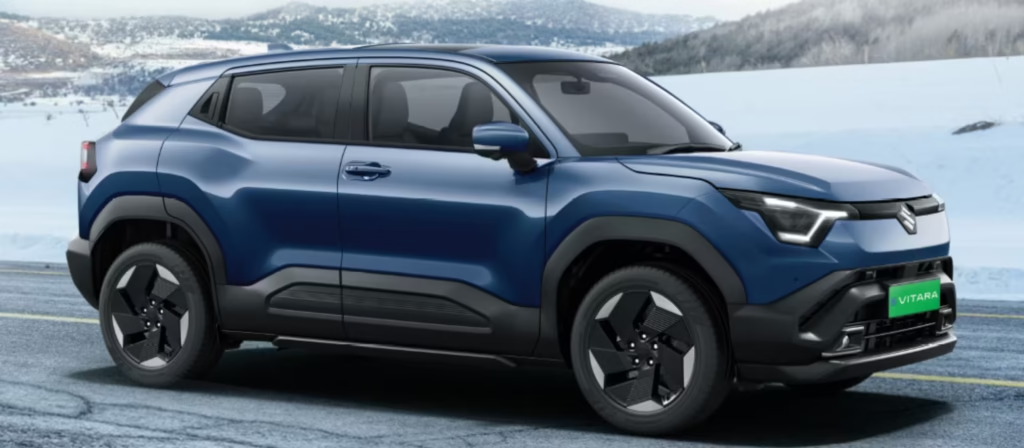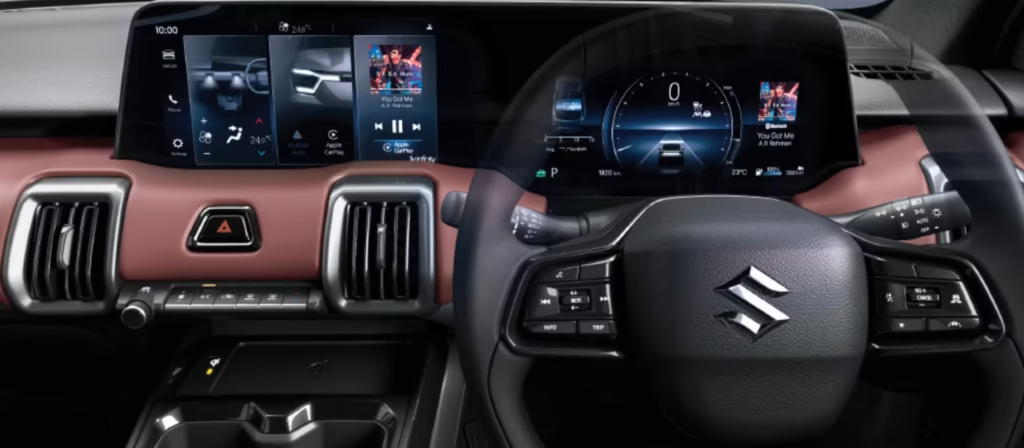The long-awaited Maruti Suzuki e Vitara production has officially commenced at the company’s Hansalpur manufacturing plant in Gujarat, marking a transformational leap for both India’s largest carmaker and the nation’s electric mobility ambitions. Flagged off by Prime Minister Narendra Modi, the e Vitara represents Maruti Suzuki’s first foray into the fast-growing EV segment and sets the stage for a major domestic and global rollout.
Also Read: Upcoming Toyota Urban Cruiser EV 2026 – Specs, Features & India Launch Timeline
Maruti Suzuki e Vitara Production: Key Milestone for Company and Nation
The start of Maruti Suzuki e Vitara production is a landmark not just for Maruti but for the entire Indian automobile industry. Until now, Maruti Suzuki trailed homegrown rivals Tata Motors and Mahindra—who were early movers in electric cars—but has mapped out a bold strategy to catch up. The move aligns with both government and industry goals to establish India as a major green mobility hub and an export centre for electric vehicles.
Quote from the Prime Minister
Prime Minister Modi acknowledged the milestone by noting:
“Today is a special day in India’s quest for self-reliance and being a hub for green mobility. The e-Vitara Battery Electric Vehicle (BEV) is made in India and will be exported to over a hundred nations.”

Key Details
| Attribute | Details |
|---|---|
| Plant Location | Hansalpur, Gujarat, India |
| Launch Segment | Mid-size electric SUV (e-SUV) |
| Price Announcement | Expected by year-end 2025 |
| Battery Options | Two options, claimed range above 500km |
| Initial Production Target | 67,000 units (FY2026) |
| Export Markets | Over 100 countries (global debut, already on sale in UK) |
| Domestic Launch | Expected early 2026 |
| EV Roadmap | First of four Maruti Suzuki EVs for India by 2030 |
Also Read: Top 5 Safest Electric Cars in India (Bharat NCAP)
India’s First True Mass-Market e-SUV
By starting Maruti Suzuki e Vitara production, the brand is targeting both Indian buyers with rising demand for green vehicles and global markets looking for affordable, reliable electric SUVs. While Tata and Mahindra established their EV credentials early, Maruti’s vast dealer network, price-conscious focus, and deep manufacturing expertise could help it quickly scale up and compete both at home and abroad.
Two Battery Options and Long Range
The e Vitara will launch with two distinct battery pack options—both promising a claimed range of over 500km on a single charge, positioning it as one of the longest-range EVs in its segment. This addresses one of the biggest pain points for Indian consumers: range anxiety.

Also Read: Tata Harrier EV vs Hyundai Creta Electric
Exports, Localization, and Electric Manufacturing Push
Maruti Suzuki will export the e Vitara to over 100 countries, making the Hansalpur plant a key global EV production hub. In parallel, the company is also starting production of hybrid battery electrodes at a separate facility in Gujarat, strengthening the domestic EV component ecosystem. These moves highlight how Maruti Suzuki e Vitara production is not just about a new model, but about building a sustainable, future-ready automotive sector in India.
Timeline, Launch, and Rivals
- Price and India launch: Maruti Suzuki is expected to reveal e Vitara prices by the end of 2025, with customer deliveries likely in early 2026.
- Production target: With 67,000 units aimed for FY2026, most earmarked for export, Maruti Suzuki demonstrates serious intent to become a major EV player on the international stage.
- Rivals: The e Vitara will go head-to-head against Tata Nexon EV, Mahindra XUV400, MG ZS EV, and Hyundai Creta EV—all of which target value-driven buyers looking for range, space, and low-cost running in their next SUV.
Also Read: Tata Harrier EV Adventure vs Mahindra XEV 9e Pack One | What should you buy?
Maruti Suzuki e Vitara Production: A Strategic Bet
The start of Maruti Suzuki e Vitara production comes at a time when global demand for electric vehicles faces both optimism and recent slowdowns, with established automakers recalibrating targets given high prices and infrastructure gaps. Maruti Suzuki has watched, learned, and now seeks to combine its strengths in cost leadership, after-sales reach, and manufacturing scale to tackle these challenges—locally and globally.
Conclusion
The commencement of Maruti Suzuki e Vitara production at the Hansalpur plant marks a new era for Indian automotive manufacturing, one that combines “Make in India” with green innovation and global ambition. With dual battery packs, a focus on exports, and a strong push towards EV leadership, the e Vitara is set to power Maruti Suzuki’s journey into the next decade.

